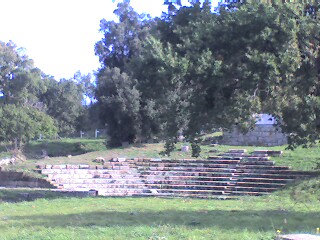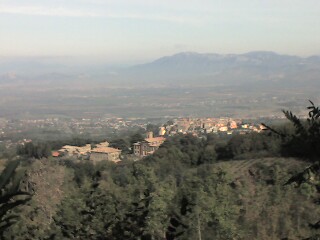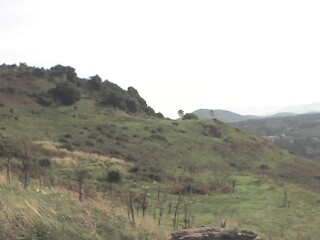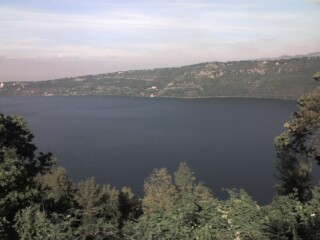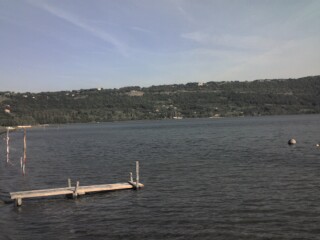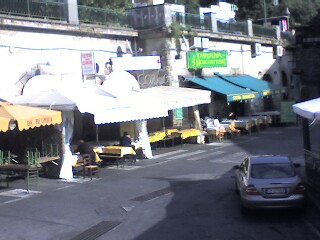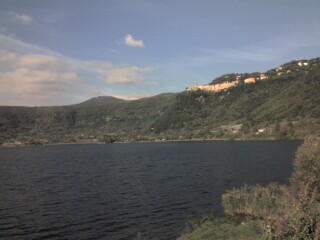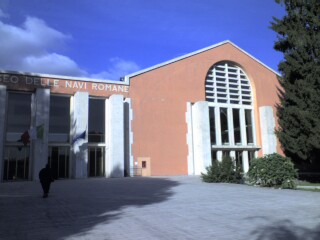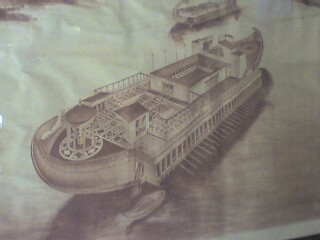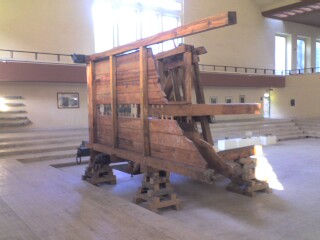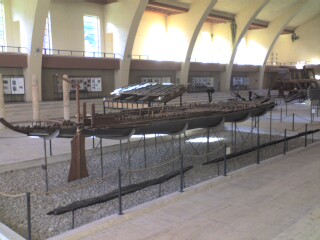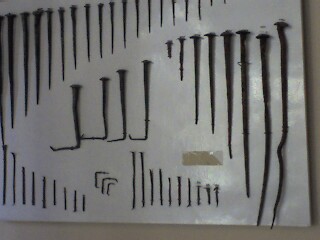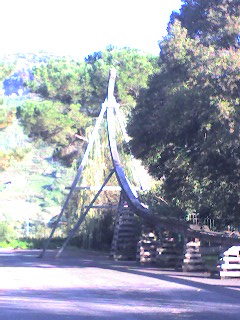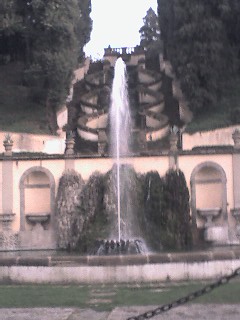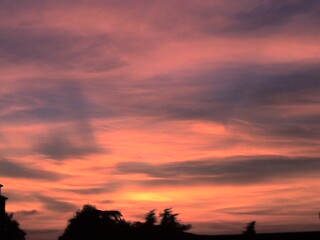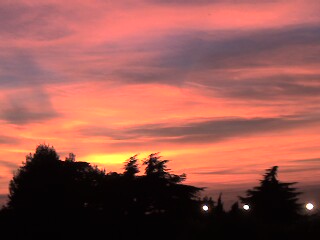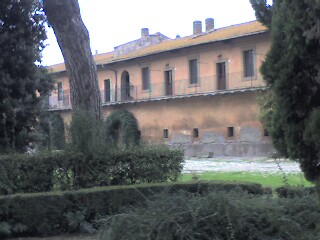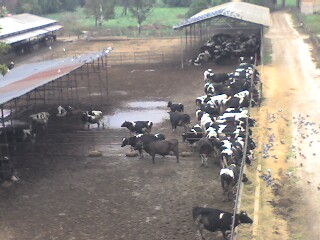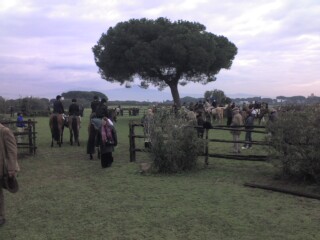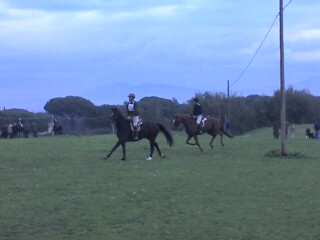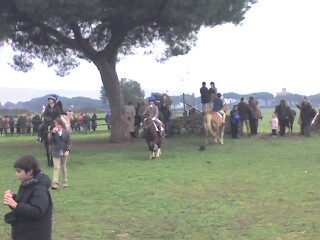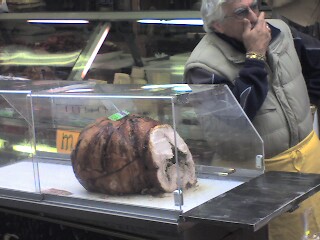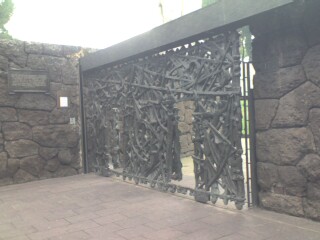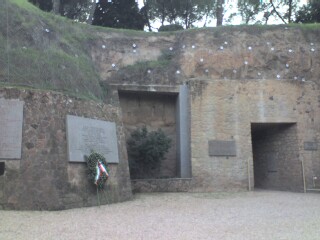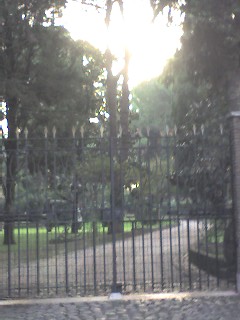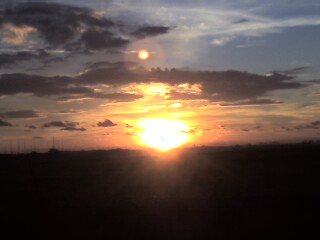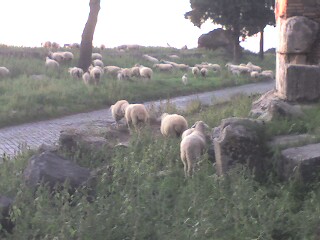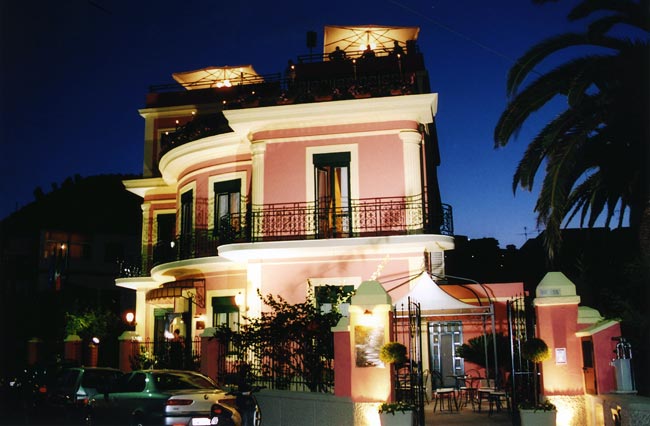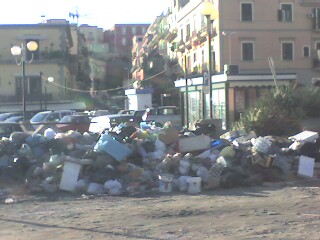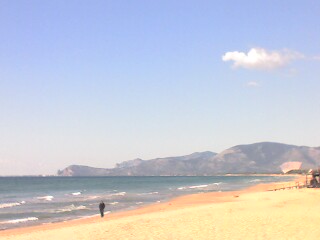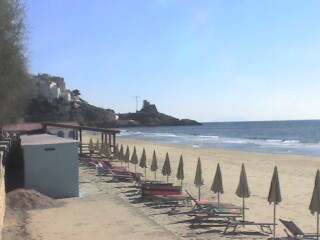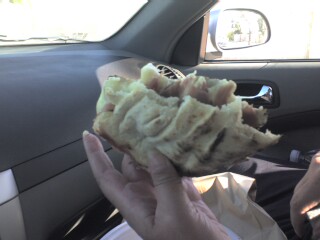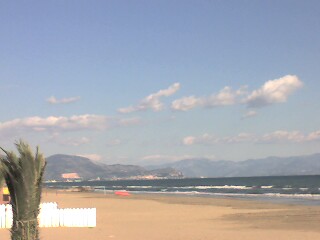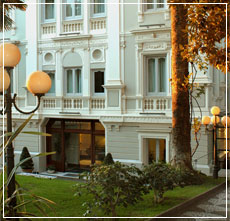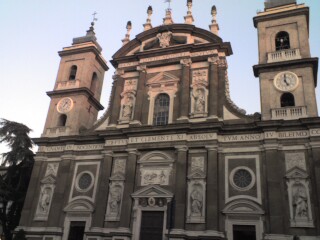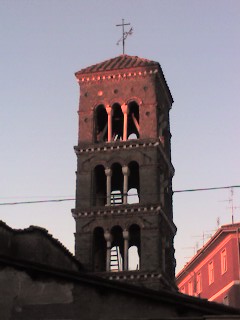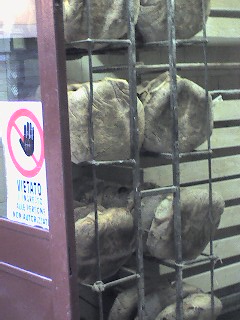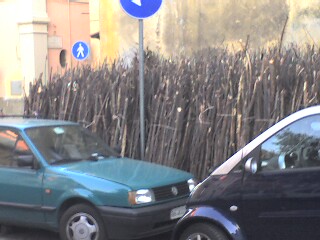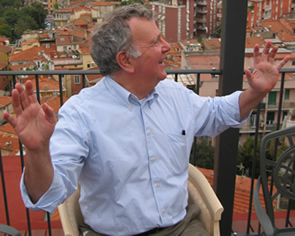Day 22: Frascati
Yet another warm and sunny day......we continue to luck out with the weather....and today we are driving to the hill town of Palestrina--the Roman city of Preneste. Palestrina is about 30 km west of Frascati; to get there we have to drive up to Monte Porzio Cantone, down into the valley and then back up a hill to Palestrina.
Palestrina is well known in musical circles as the birthplace of Giovanni Pierluigi Palestrina--the 16th century composer and creator of polyphonic harmony- but it is also one of the oldest towns in Italy and the site of one of the largest and most famous temples of the ancient world. The temple was the home of the very popular oracle named Fortuna Primagenia and many Romans made the trip from Rome on the Via Prenestina to consult her.
The temple had been lost and only was rediscovered when Palestrina was heavily bombed during World War II. The houses in the upper part of town were destroyed and the ruins of the ancient temple were uncovered. The temple complex was enormous; it covered the entire area of the present day town from the top of the hill to the valley floor. There were a series of large terraces and stairs that led up to where the oracle sat and it was richly decorated and could be seen for miles. In addition to the temple, the area was a summer resort and many wealthy and famous Romans--Cicero, Horace, Pliny - praised it in their writings. The emperors Augustus, Marcus Aurelius and Hadrian all had villas in the area.
Once Christianity took hold, the fortunes of the oracle took a turn for the worse and gradually the temple fell into disuse and people began living on the site and building houses. During the 17th century, wealthy and powerful Roman families, like the Colonnas and the Barberinis, moved here and the Barberinis built a large palazzo at the top of the hill incorporating pieces of the temple into the structure. Apparently, all the notable architects of the time--Bramante, Bernini, Palladio, Raphael--were familiar with the temple complex and incorporated features of the temple in their work.
We drive up to the top of the town Palestrina to the Barberini palace which now houses the very excellent museum containing many of the artifacts from the temple as well as explanations about the history and construction. The museum is quite wonderful---well arranged with plenty of light--and the primitive audioguide (walkman and cassette tape) is well done.
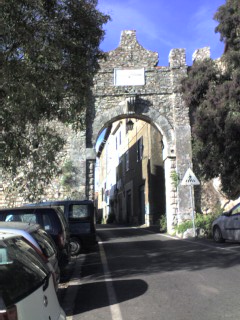
Entrance to the upper town
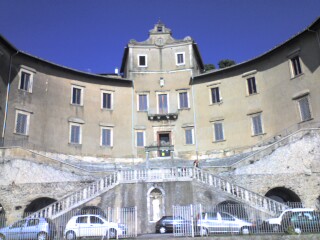
Palazzo Barberini (museum)
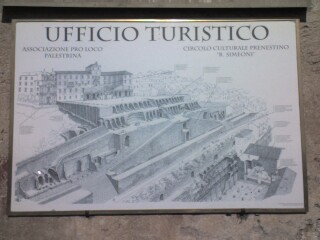
Artist's rendering of the temple complex with the Barberini Palace on top
No pictures are allowed in the museum but the statues, columns and other artifacts are well worth seeing. The most wonderful exhibit in the collection is a 2nd century B.C. mosaic depicting a map of Egypt and the Nile which includes scenes of people, buildings and animals in wonderful detail. (The picture below doesn't do justice to the mosaic; there is a bigger picture if you follow the link below to the museum exhibits).

There is a model of the temple complex which gives a good idea of the size and elaborateness of the building. Here is a link to pictures of exhibits in the museum.
The views from the terrace in front of the museum are wonderful and in ancient days, the temple was visible for miles around. After we finish in the museum, we sit in the sun and enjoy the views before heading down to the very attractive "centro storico". We stroll through the town, stopping to see the statue to Palestrina
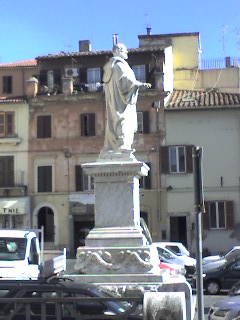
in the main square, take a quick look at the duomo and its belltower and note the Roman columns embedded in the walls of the town buildings
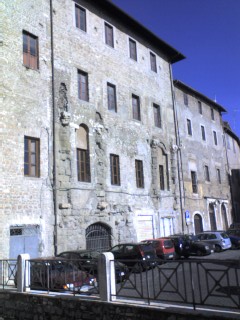
do a little shopping and admire the street signs which look like mosaics.
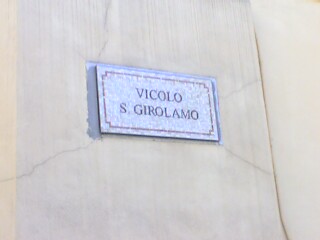
We have a very nice lunch in the local hotel's dining room (the Coccia restaurant in the Hotel Stella)......polenta with cheese and lardo followed by gnocchi with beans, clams and mussels for me and Diana has a selection of antipasto from the buffet and the house specialty of fettuccine with a nice ragu.
After lunch, we drive back to the Colli Albani and take a driving tour of the highest and steepest town in the area--the very picturesque Rocca di Papa. The town is at about 2,500 feet and after driving up a very steep hill to the main square, the upper part of the town still towers above us.
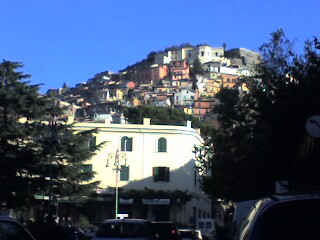
View of the upper town of Rocca di Papa
The street patten is thankfully one way as we drive up almost to the top (on very narrow, windy streets) and quickly drop back down to the main square. Needless to say, the views over the hills are wonderful. We make a stop in Genzano di Roma to pick up some of their famous bread and then take the scenic route back to Frascati.
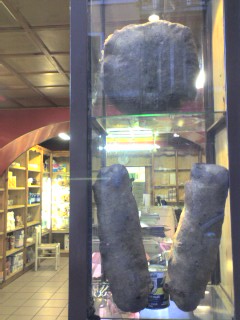
Bread from Genzano di Roma
At dinner time, we are tired and neither of us is too hungry so we decide to skip going out, eat some bread and cheese in the room and make it an early night.
Tomorrow we are off to Rome.
Palestrina is well known in musical circles as the birthplace of Giovanni Pierluigi Palestrina--the 16th century composer and creator of polyphonic harmony- but it is also one of the oldest towns in Italy and the site of one of the largest and most famous temples of the ancient world. The temple was the home of the very popular oracle named Fortuna Primagenia and many Romans made the trip from Rome on the Via Prenestina to consult her.
The temple had been lost and only was rediscovered when Palestrina was heavily bombed during World War II. The houses in the upper part of town were destroyed and the ruins of the ancient temple were uncovered. The temple complex was enormous; it covered the entire area of the present day town from the top of the hill to the valley floor. There were a series of large terraces and stairs that led up to where the oracle sat and it was richly decorated and could be seen for miles. In addition to the temple, the area was a summer resort and many wealthy and famous Romans--Cicero, Horace, Pliny - praised it in their writings. The emperors Augustus, Marcus Aurelius and Hadrian all had villas in the area.
Once Christianity took hold, the fortunes of the oracle took a turn for the worse and gradually the temple fell into disuse and people began living on the site and building houses. During the 17th century, wealthy and powerful Roman families, like the Colonnas and the Barberinis, moved here and the Barberinis built a large palazzo at the top of the hill incorporating pieces of the temple into the structure. Apparently, all the notable architects of the time--Bramante, Bernini, Palladio, Raphael--were familiar with the temple complex and incorporated features of the temple in their work.
We drive up to the top of the town Palestrina to the Barberini palace which now houses the very excellent museum containing many of the artifacts from the temple as well as explanations about the history and construction. The museum is quite wonderful---well arranged with plenty of light--and the primitive audioguide (walkman and cassette tape) is well done.

Entrance to the upper town

Palazzo Barberini (museum)

Artist's rendering of the temple complex with the Barberini Palace on top
No pictures are allowed in the museum but the statues, columns and other artifacts are well worth seeing. The most wonderful exhibit in the collection is a 2nd century B.C. mosaic depicting a map of Egypt and the Nile which includes scenes of people, buildings and animals in wonderful detail. (The picture below doesn't do justice to the mosaic; there is a bigger picture if you follow the link below to the museum exhibits).

There is a model of the temple complex which gives a good idea of the size and elaborateness of the building. Here is a link to pictures of exhibits in the museum.
The views from the terrace in front of the museum are wonderful and in ancient days, the temple was visible for miles around. After we finish in the museum, we sit in the sun and enjoy the views before heading down to the very attractive "centro storico". We stroll through the town, stopping to see the statue to Palestrina

in the main square, take a quick look at the duomo and its belltower and note the Roman columns embedded in the walls of the town buildings

do a little shopping and admire the street signs which look like mosaics.

We have a very nice lunch in the local hotel's dining room (the Coccia restaurant in the Hotel Stella)......polenta with cheese and lardo followed by gnocchi with beans, clams and mussels for me and Diana has a selection of antipasto from the buffet and the house specialty of fettuccine with a nice ragu.
After lunch, we drive back to the Colli Albani and take a driving tour of the highest and steepest town in the area--the very picturesque Rocca di Papa. The town is at about 2,500 feet and after driving up a very steep hill to the main square, the upper part of the town still towers above us.

View of the upper town of Rocca di Papa
The street patten is thankfully one way as we drive up almost to the top (on very narrow, windy streets) and quickly drop back down to the main square. Needless to say, the views over the hills are wonderful. We make a stop in Genzano di Roma to pick up some of their famous bread and then take the scenic route back to Frascati.

Bread from Genzano di Roma
At dinner time, we are tired and neither of us is too hungry so we decide to skip going out, eat some bread and cheese in the room and make it an early night.
Tomorrow we are off to Rome.
